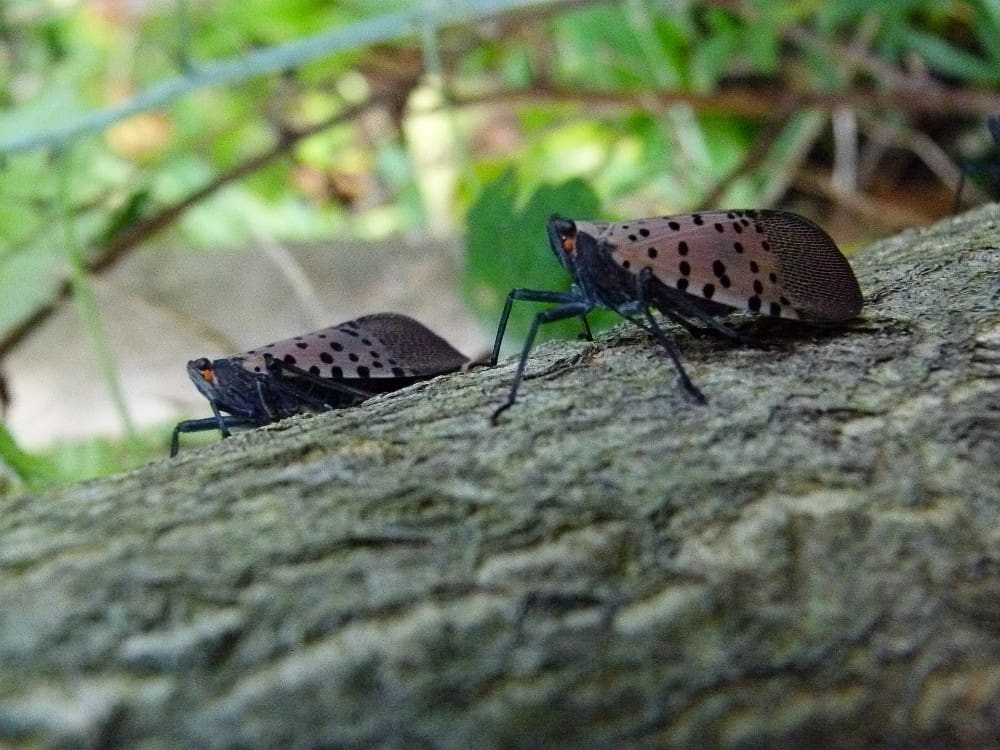Are spotted lanternflies poisonous to pets? Read on to find out, so you can enjoy your yard worry-free.
Spotted lanternflies have been causing quite a stir lately. These invasive pests have been spreading rapidly across the northeastern United States. They are already causing significant damage to crops and trees, causing many pet owners to be concerned about the potential threat they pose to their furry friends.
Are spotted lanternflies poisonous to pets? Read on to learn about potential dangers and tips to keep your favorite animals safe from harm. Borst Landscape & Design has over 30 years of experience protecting your lawn and loved ones with our practical, eco-friendly treatments.
To learn more about our pest control services, call Borst at (201) 785-9400, or reach out online today!
Are spotted lanternflies poisonous to pets?
Spotted lanternflies are a type of invasive insect species that are known to feed on trees, plants, and crops. They can often be found in areas with a lot of vegetation. They can also be attracted to pets that spend time outdoors, such as dogs and cats.
All the recent hype about these pests is undoubtedly warranted. You may be wondering, are spotted lanternflies poisonous to pets? The short answer is no. They are not known to be toxic to pets. They excrete a sticky substance called honeydew, which can be annoying and messy for pets and humans. However, it’s not harmful if ingested.
Keeping your pets away from spotted lanternflies is still a good idea. The insects have been known to swarm in large numbers. They could cause irritation or discomfort for pets if they get too close.
How can you keep your pets safe?
Are spotted lanternflies poisonous to pets? The short answer is no, but they can certainly be a nuisance. Here are a few tips and precautions to ensure your pets are safe and comfortable. Following these tips and staying vigilant during spotted lanternfly season can help keep your beloved animals safe and protected from this invasive pest.
Keep your pets indoors as much as possible. If you have a backyard, limit your time outside, especially during the peak spotted lanternfly season, typically from May to November. Instead, consider taking your pets on walks or hikes in areas less likely to be infested with spotted lanternflies.
Be mindful of what your animals are eating. Spotted lanternflies can be attracted to food and water bowls, so you’ll want to keep these areas clean and debris-free. Also, avoid leaving food out for extended periods, which can attract other pests.
Use insect repellent when necessary. If you need to take your pets outside during spotted lanternfly season, consider using an insect repellent that is safe for pets. Be sure to follow the instructions carefully and only use products that are specifically designed for use on animals.
Check your pets for signs of infestation. Spotted lanternflies can attach themselves to pets and other animals, so you should check your pets regularly for any signs of infestation. Look for small, round insects with black spots, white wings, and any eggs attached to your pets’ fur. If you find them hanging around, at least you won’t wonder, are spotted lanternflies poisonous to pets?
Are you looking for organic pest management? Think Borst.
We know spotted lanternflies aren’t toxic to pets, but the warm weather will undoubtedly bring them about. Ticks and mosquitos will also come out of hiding with the warmer weather. Borst Landscape & Design wants to help protect your property and the environment by keeping out unwanted pests.
We offer an Integrated Pest Management program that keeps your family and pets safe and healthy. Our natural pest control solutions avoid synthetic chemical insecticides and pesticides. Instead, we work with natural soil and environmental conditions to create inhospitable conditions for pests.
To learn more about our services, call Borst at (201) 785-9400, or reach out online today!
Image by Daina Krumins from Pixabay.

